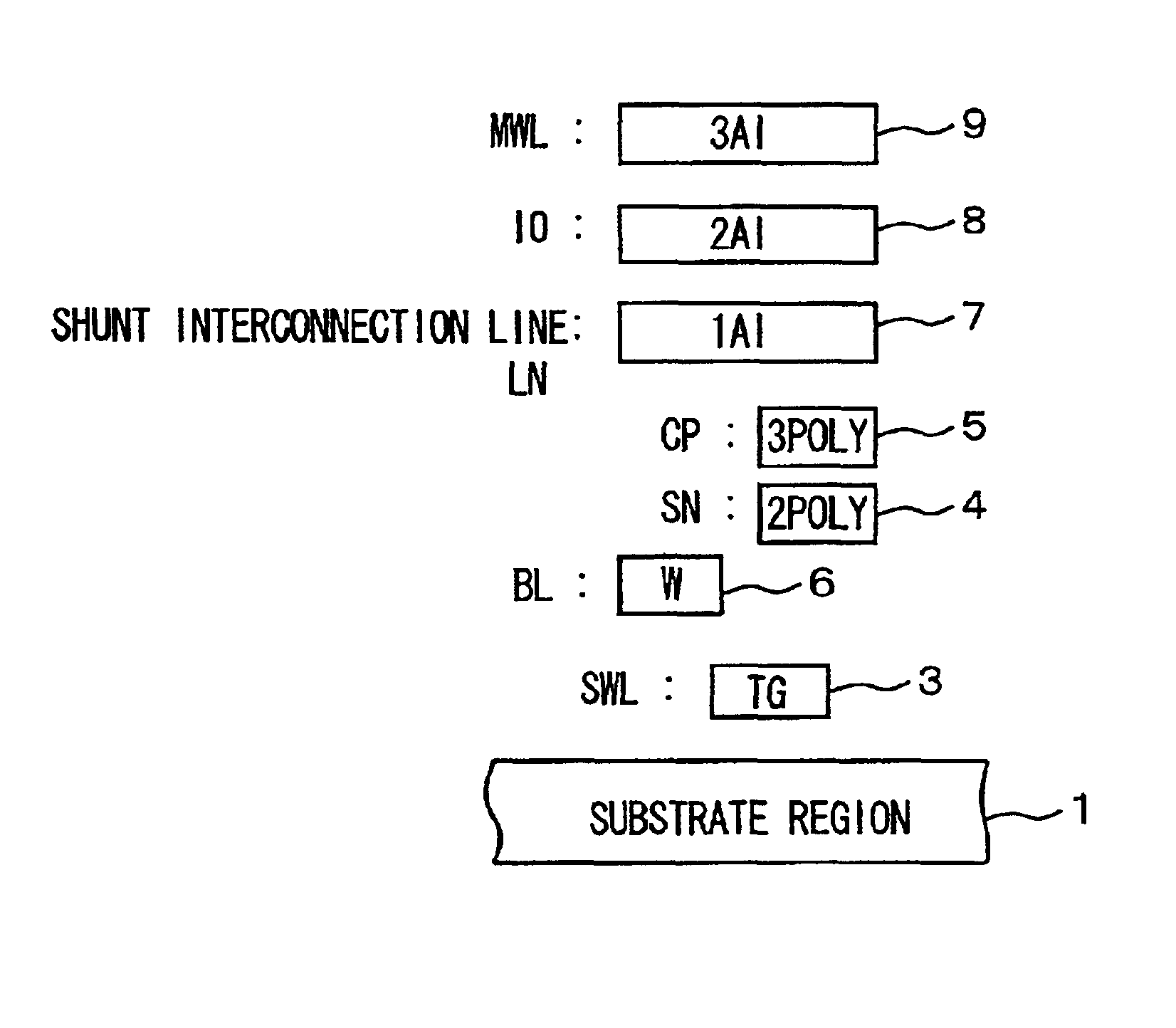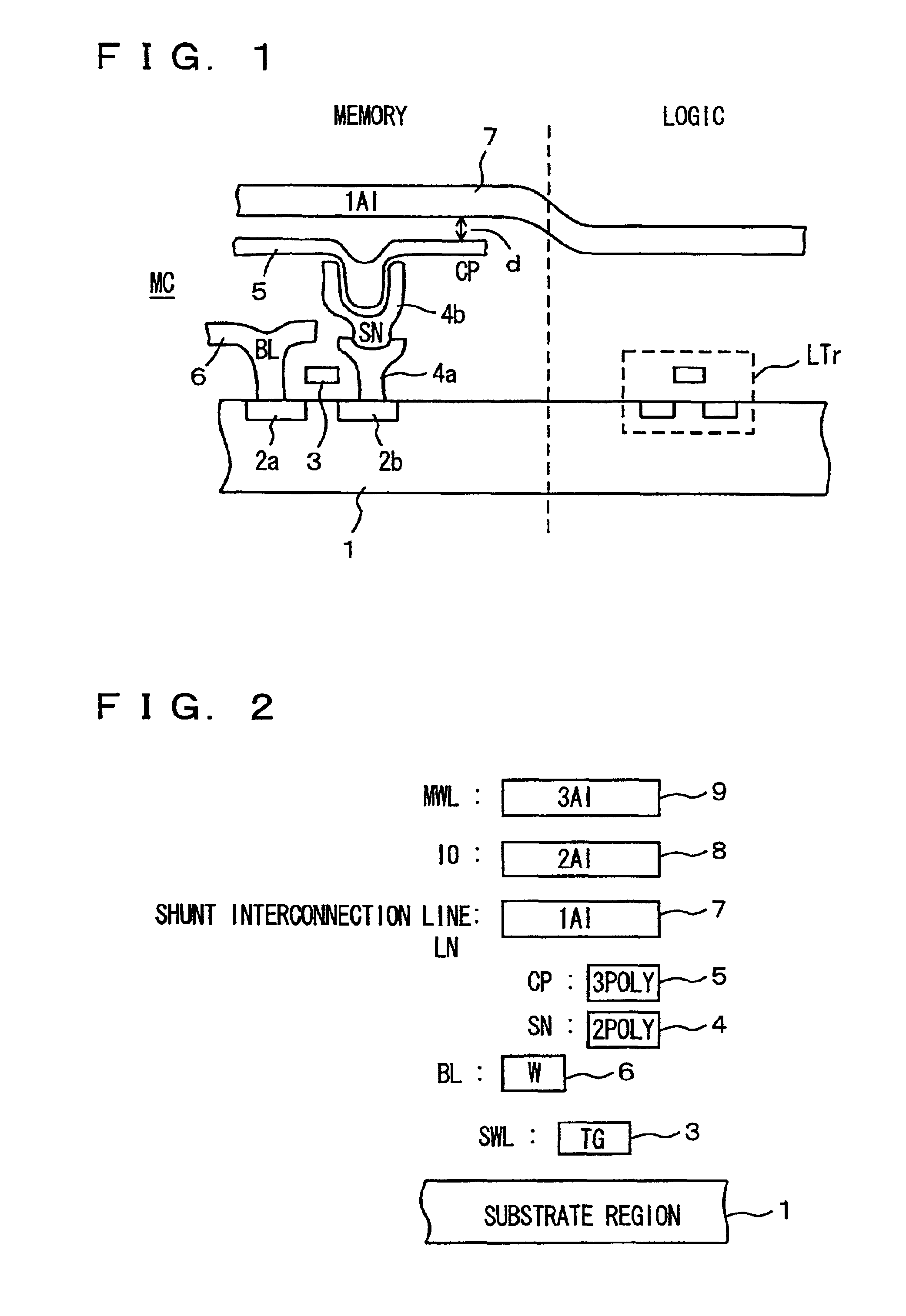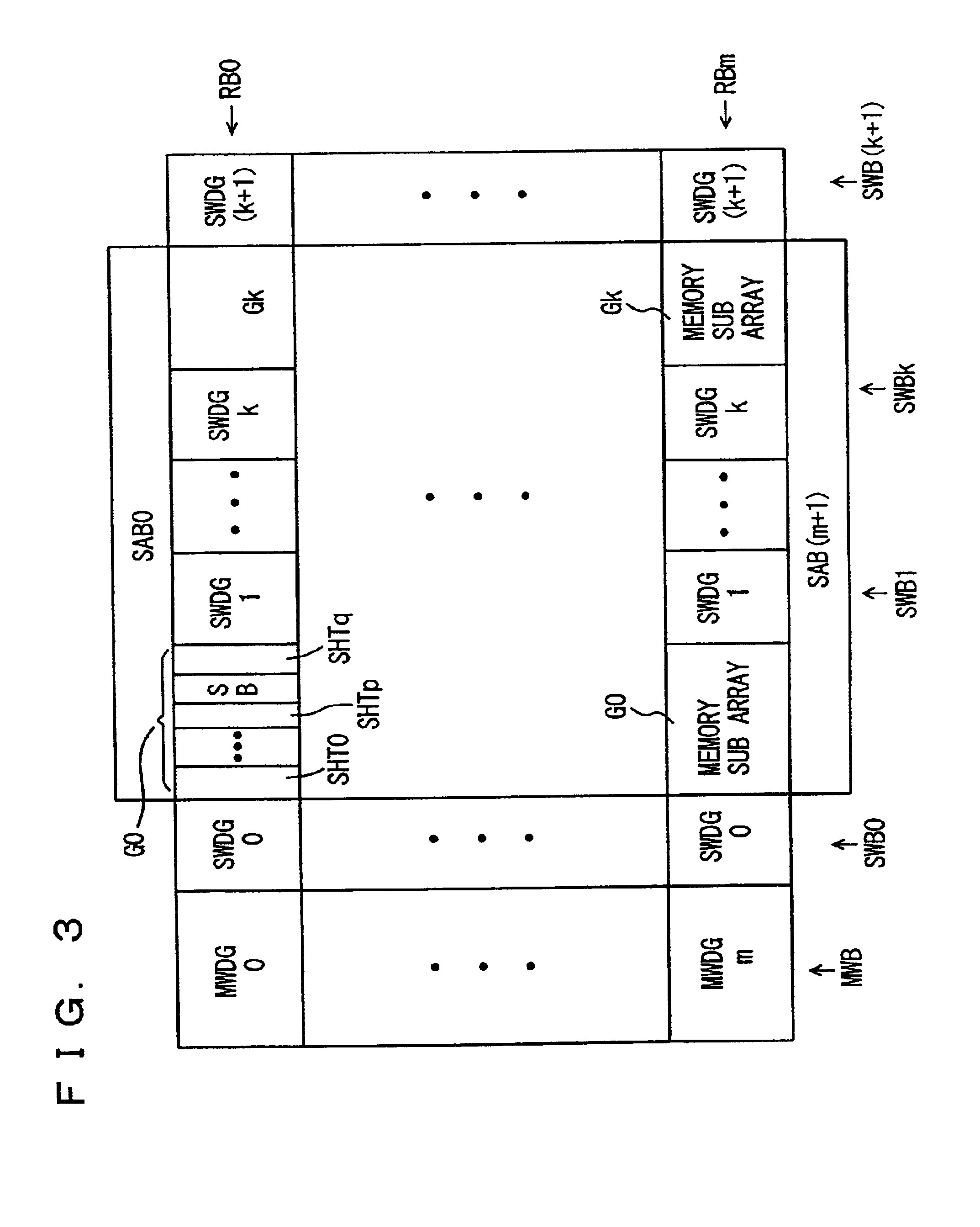Semiconductor memory device
a memory device and semiconductor technology, applied in the direction of solid-state devices, transistors, instruments, etc., can solve the problems of short signal propagation delay, and the inability to disable high-speed driving of word lines, etc., and achieve the effect of high speed
- Summary
- Abstract
- Description
- Claims
- Application Information
AI Technical Summary
Benefits of technology
Problems solved by technology
Method used
Image
Examples
first embodiment
[First Embodiment]
[0078]FIG. 1 is a diagram schematically showing a sectional structure of a memory cell of a semiconductor memory device according to the present invention. The semiconductor memory device is an embedded memory integrated with a logic circuit on the same semiconductor chip.
[0079]In FIG. 1, a memory cell MC includes: impurity regions 2a and 2b, formed apart from each other on a surface of a semiconductor substrate region 1; a gate electrode 3 formed on a channel region between impurity regions 2a and 2b with an gate insulating film, not shown, laid thereunder; storage node electrodes 4a and 4b connected to impurity region 2b electrically and physically; and a cell plate electrode layer 5 placed facing to storage node electrode 4b with a capacitor insulating film, not shown, inserted in between. Impurity region 2a is connected to a conductive layer 6 serving as a bit line BL.
[0080]A first level aluminum interconnection line 7 is formed on cell plate electrode layer 5....
second embodiment
[Second Embodiment]
[0141]FIG. 14 is a diagram schematically showing a cross sectional configuration of a memory cell according to the second embodiment of the present invention. In FIG. 14, a memory cell MC includes: impurity regions 91 and 92 formed on a surface of a semiconductor substrate region 90; a gate electrode layer 93 formed on a channel region between impurity regions 91 and 92 with a gate insulating film, not shown, laid thereunder; a trench region 94 electrically connected to impurity region 92; and cell plate electrode 95 disposed facing trench region 94 with a capacitor insulating film, not shown, interposed in between. Impurity region 91 is electrically connected to a conductive layer constituting a bit line BL.
[0142]The structure of memory cell MC shown in FIG. 14 is a so-called trench capacitor structure. A memory capacitor is constituted of facing surfaces of cell plate electrode 95 in trench region 94 and a trench through the capacitor insulating film. In a case ...
third embodiment
[Third Embodiment]
[0147]FIG. 15 is a diagram schematically showing a configuration of a memory mat according to a third embodiment of the present invention. The memory mat shown in FIG. 15 is divided into plural row blocks, similar to the first embodiment. Each row block are divided into memory sub arrays G0 to Gk by sub word driver bands SWB1 to SWBk. Sub word driver bands SWB0 and SWB (k+1) are provided outside respective memory sub arrays G0 and Gk.
[0148]Sub word driver groups SWDGR and SWDGL are disposed in each of sub word driver bands SWB1 To SWBk. Sub word driver groups SWDGR and SWDGL are independently driven. In one memory sub array Gi, sub word lines are driven by sub word drivers of sub word driver groups SWDGL and SWDGR provided alternately on both sides thereof.
[0149]In a case of a configuration of the memory mat shown in FIG. 15, memory sub arrays aligned in the column direction constitute one bank. That is, in the case of the configuration of the memory mat shown in F...
PUM
 Login to View More
Login to View More Abstract
Description
Claims
Application Information
 Login to View More
Login to View More - R&D
- Intellectual Property
- Life Sciences
- Materials
- Tech Scout
- Unparalleled Data Quality
- Higher Quality Content
- 60% Fewer Hallucinations
Browse by: Latest US Patents, China's latest patents, Technical Efficacy Thesaurus, Application Domain, Technology Topic, Popular Technical Reports.
© 2025 PatSnap. All rights reserved.Legal|Privacy policy|Modern Slavery Act Transparency Statement|Sitemap|About US| Contact US: help@patsnap.com



